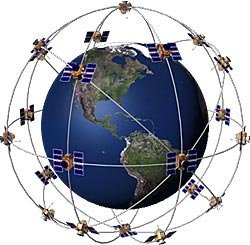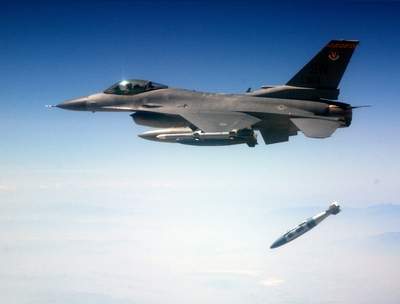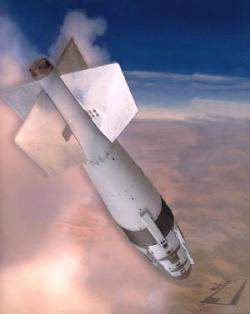 Iraq
and other potential adversaries may have the ability to jam global
positioning system signals, but Air Force war planners are not too
worried about the effect of jamming on precision munitions. In
fact, it is a challenge they have been anticipating for a long
time, and they are confident in their ability to overcome it.
Iraq
and other potential adversaries may have the ability to jam global
positioning system signals, but Air Force war planners are not too
worried about the effect of jamming on precision munitions. In
fact, it is a challenge they have been anticipating for a long
time, and they are confident in their ability to overcome it.
"From the day we built GPS, we've been working on ways to
overcome jamming," said Lt. Col. John Carter, chief of space
requirements at the Pentagon. "We're very confident we can do
that."
GPS is a constellation of satellites that emit electronic
signals while orbiting the Earth. A GPS receiver gathers the
signals from multiple satellites overhead, then triangulates those
signals to calculate its precise location. Those receivers can be
hand-held or mounted in ships, aircraft, vehicles and precision
guided munitions.
The United States routinely installs GPS guidance packages in
standard 500- 1,000- and 2,000-pound bombs to create the Joint
Direct Attack Munitions. The JDAM typically strikes within 13
meters of its target. According to reports, Iraq has acquired
several Russian-made transmitters capable of jamming the GPS
signal.

In general terms, someone could "jam" a radio signal by
transmitting a more powerful signal on the same frequency. Carter
equates the practice with trying to listen to a conversation on the
other side of the room while another person shouts in your face.
While the tactic may seem easy to accomplish, Carter said he would
not encourage anyone to take the job.
 "Anyone who (transmits) on the battlefield can be
found, and anyone who can be found can be targeted," he said. "When
the bad guys are picking jobs, (they) don't want to pick 'GPS
jammer.'" A GPS jammer is not a silver bullet to prevent precision
bombardment, Carter said, because the Air Force has more than one
way to put steel on target.
"Anyone who (transmits) on the battlefield can be
found, and anyone who can be found can be targeted," he said. "When
the bad guys are picking jobs, (they) don't want to pick 'GPS
jammer.'" A GPS jammer is not a silver bullet to prevent precision
bombardment, Carter said, because the Air Force has more than one
way to put steel on target.
"Oftentimes we get sucked into looking at individual
engagements, and warfare is not an individual engagement," he said.
"It's the sum of all the actions you take. We have a lot of arrows
in our quiver."
Those include the inertial navigation system within the JDAM,
its primary navigation system, which is fully capable of guiding
the weapon to its target. The Air Force also employs laser- and
optically-guided munitions, as well as free-falling bombs. The Air
Force also is looking ahead to ensure future GPS satellites are
more jam-resistant, beginning with the current crop of modified GPS
IIRs.
 "One
of the features of the modification is something called flexible
power, which increases the power level radiated from the GPS," said
Peter B. Teets, undersecretary of the Air Force and chief of the
National Reconnaissance Office. That power increase will provide
some anti-jam capability, but Teets said the real improvement will
come when the GPS III is introduced in about 10 years.
"One
of the features of the modification is something called flexible
power, which increases the power level radiated from the GPS," said
Peter B. Teets, undersecretary of the Air Force and chief of the
National Reconnaissance Office. That power increase will provide
some anti-jam capability, but Teets said the real improvement will
come when the GPS III is introduced in about 10 years.
"We recognize the fact that GPS can be jammed," Teets said.
"We're taking steps to make it much more jam-resistant on the
satellite side, on the control-element side and on the
user-equipment side.
"I think we're doing the necessary smart things to enable GPS to
serve us well," Teets said. [ANN Thanks Master Sgt. Scott Elliott,
Air Force Print News]
 ANN's Daily Aero-Linx (05.02.24)
ANN's Daily Aero-Linx (05.02.24) ANN's Daily Aero-Term (05.02.24): Touchdown Zone Lighting
ANN's Daily Aero-Term (05.02.24): Touchdown Zone Lighting Aero-News: Quote of the Day (05.02.24)
Aero-News: Quote of the Day (05.02.24) ANN FAQ: Contributing To Aero-TV
ANN FAQ: Contributing To Aero-TV NTSB Final Report: Cirrus Design Corp SR20
NTSB Final Report: Cirrus Design Corp SR20






